At first glance, Orchha is all about the grand monuments that
tower over the town, and present magnificent views across the Betwa river.
Then, we listen to its stories, and are swayed by the twists in its history,
its association with so many interesting personages, who have left their
footprints behind. There are, however, even more stories waiting to be heard,
but which can only be seen, when you look closer, at the art of Orccha.
The art is visible everywhere, starting with the Jehangir
Mahal, where every single stone has been painstakingly put together, to create
the perfect palace for the Emperor. As they say, the evidence is in the
details, and Vir Singh Deo ensured that the palace he built for his emperor
would stand out in every way – in architecture, as well as the art that went
into it.
Look at this door frame, where it is difficult to distinguish
between the wood and the stone!
And this ornate entrance, built to impress.
The paintings are faded, but you can imagine what a grand sight
they must have been, in their day!
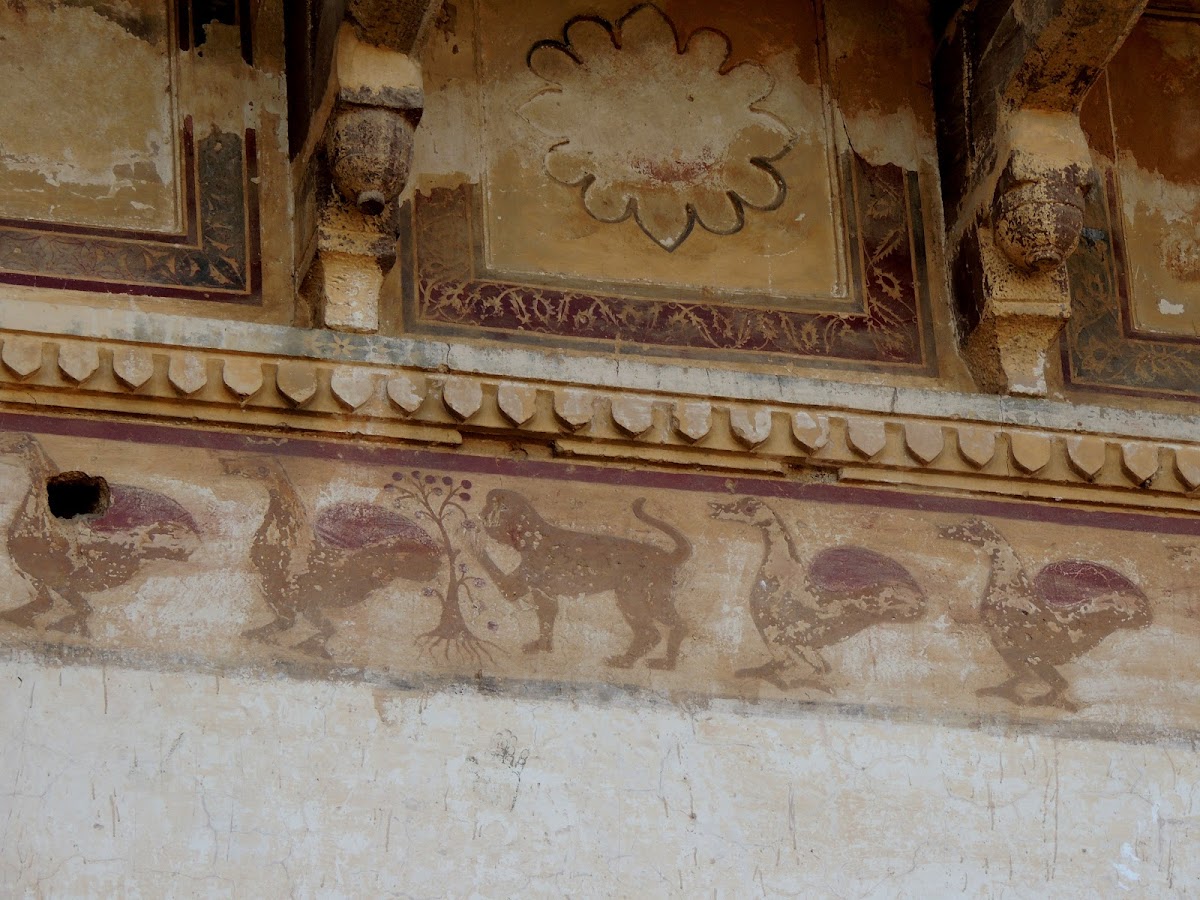 |
| These ducks in a row, with monkeys disrupting them must be a common theme. We saw this at Gwalior Fort as well. |
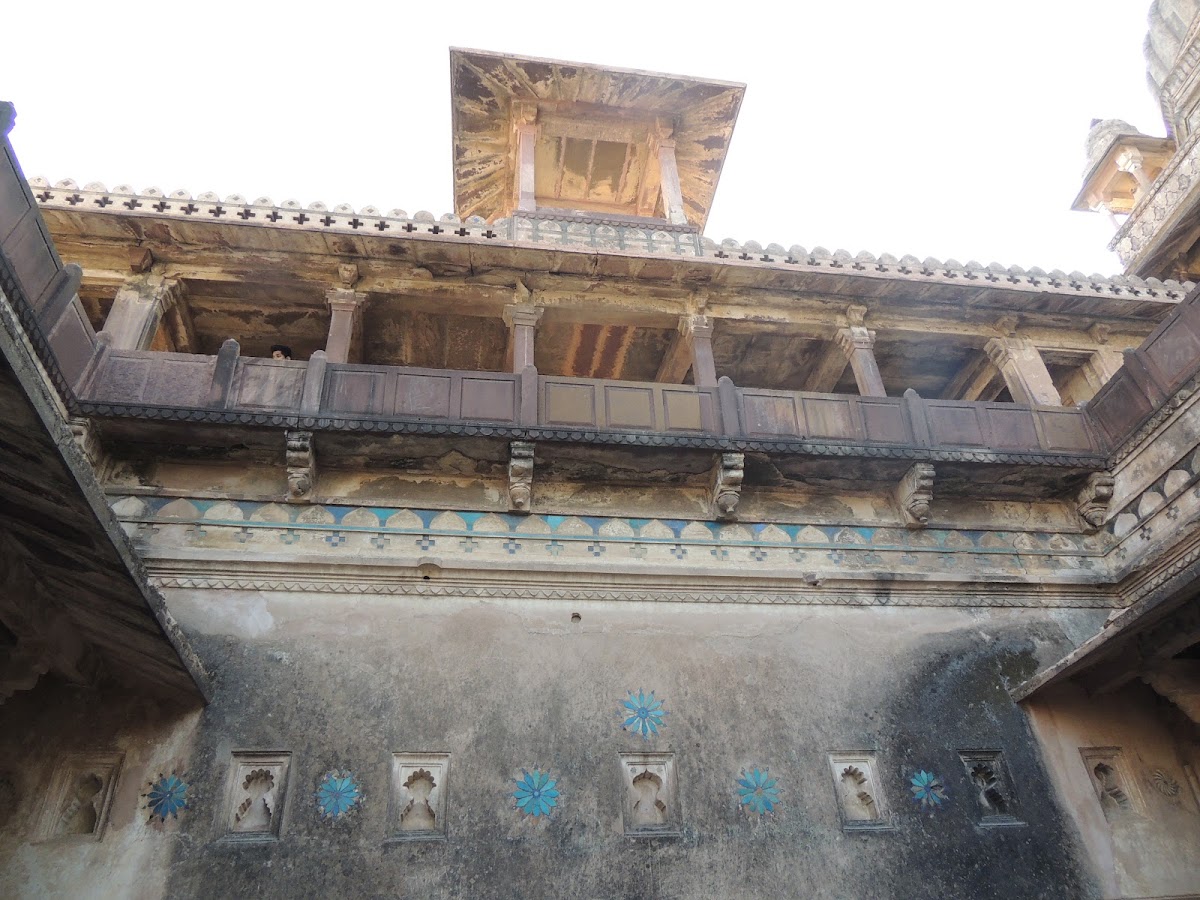 |
| the bright blue tiles continue to shine despite the condition of the rest of the structure! |
As for the jaalis, not only are they functional, but also so ornamental!
Art at the Jehangir Mahal was clearly a decorative element,
created to impress.
Then, there is the second kind of art, not made for kings, or
to impress, but to express ones’ devotion. This is the oldest kind of art at
Orccha, seen at the Raja Mahal.
In my earlier post, I have referred to the story of Madhukar
Shah, and the transition from Shaivite to Vaishnavite beliefs. The art at the
palace is clearly an expression of this shift in faith, for almost every room
has art depicting Krishna, in his various forms.
 |
| A panel depicting the Dashavatar...this section showing from right, Matsya (the fish), Kurma (the tortoise), Varaha (the boar), Narasimha (the man-lion) |
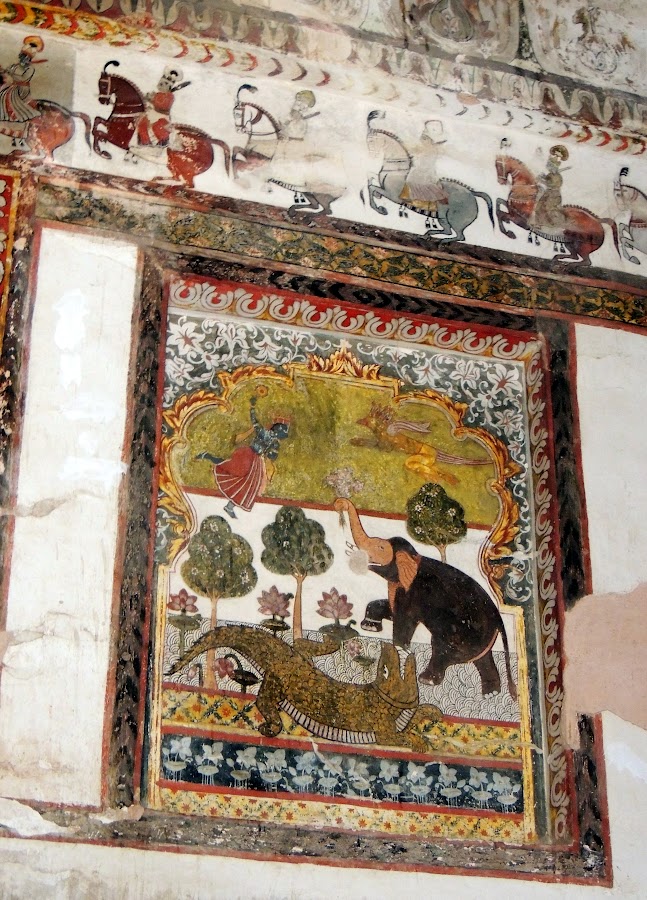 |
| A panel narrating the story of Gajendra Moksham |
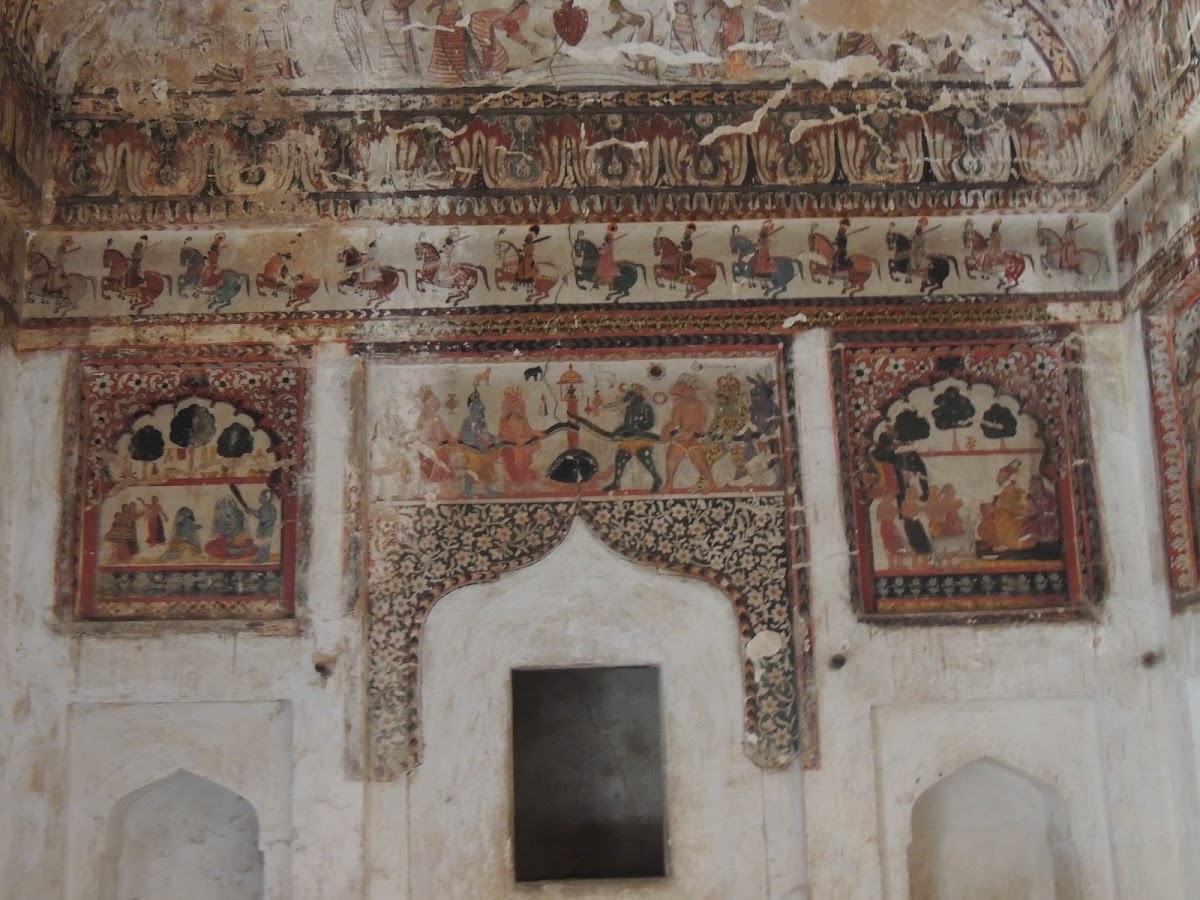 |
| A panel (centre) showing the Churning of the Ocean |
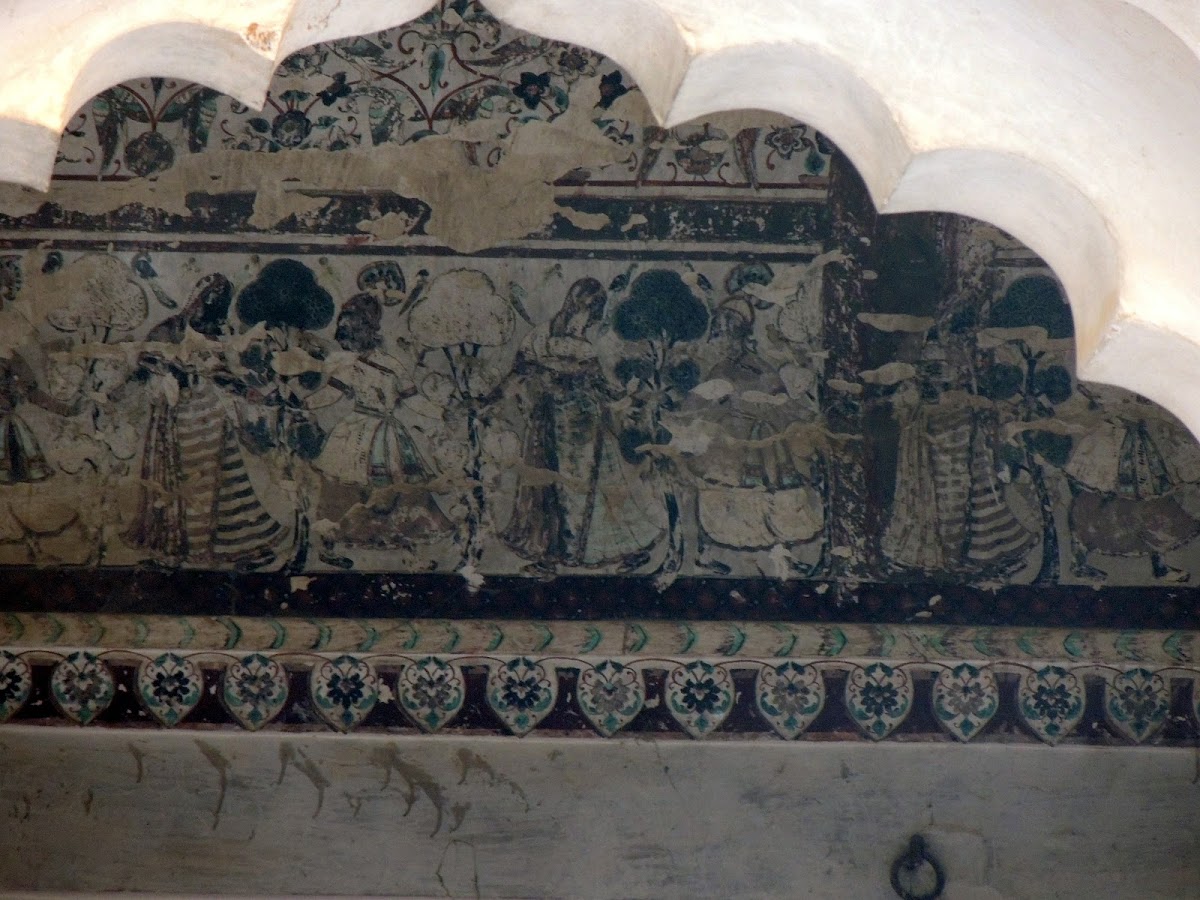 |
| One of the paintings of Krishna and the Gopis |
There is of course, secular, decorative art, as well ….
But, on the whole, Vaishnava art stands out by its exuberance,
as well as detail, and prominence.
The paintings at the Lakshmi Narayan Temple are also predominantly
Vaishnava art. These paintings however, are dated to a later period, and hence
you can see other deities as well, as part of the extended pantheon of gods.
Besides, the focus here is on narration of stories, especially the Ramayana and
the Bhagavat Puran.
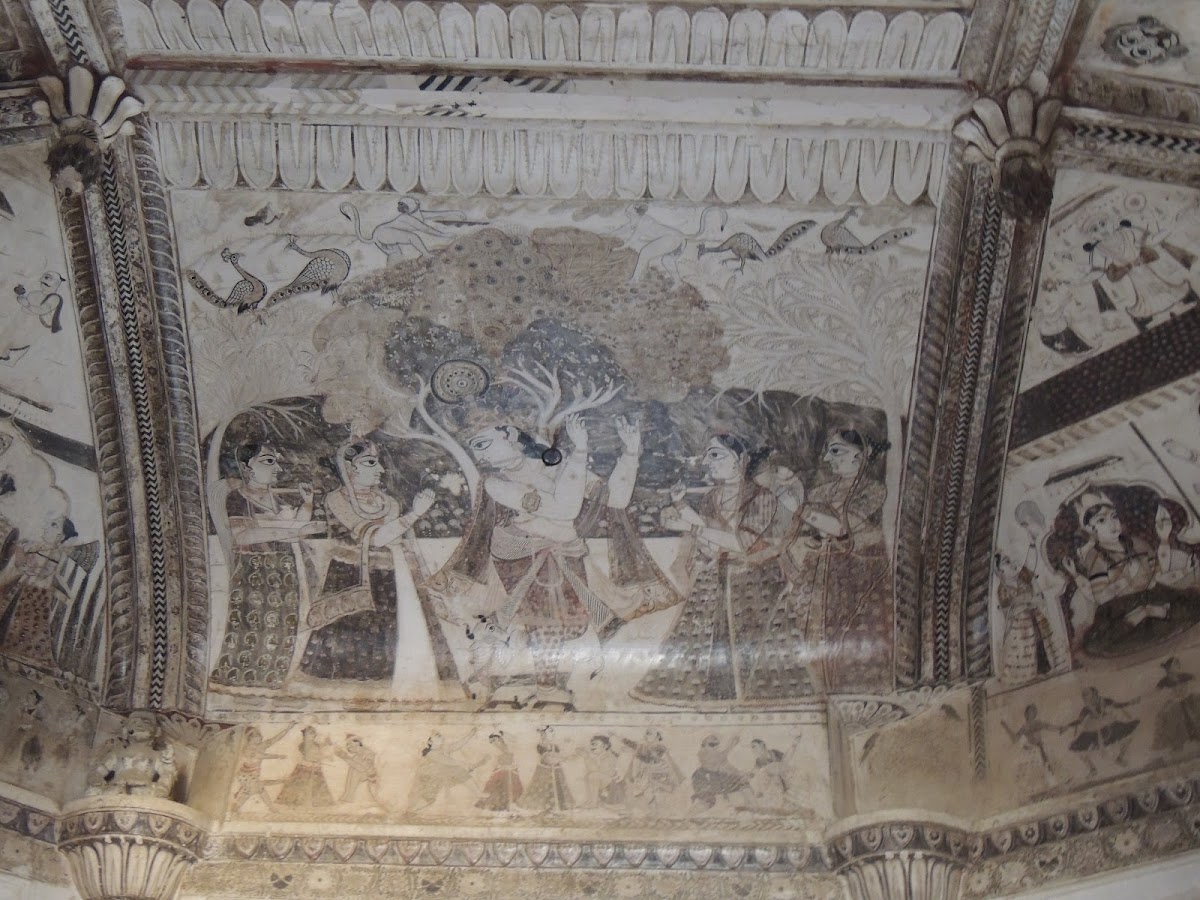 |
| Krishna playing his flute for the Gopis |
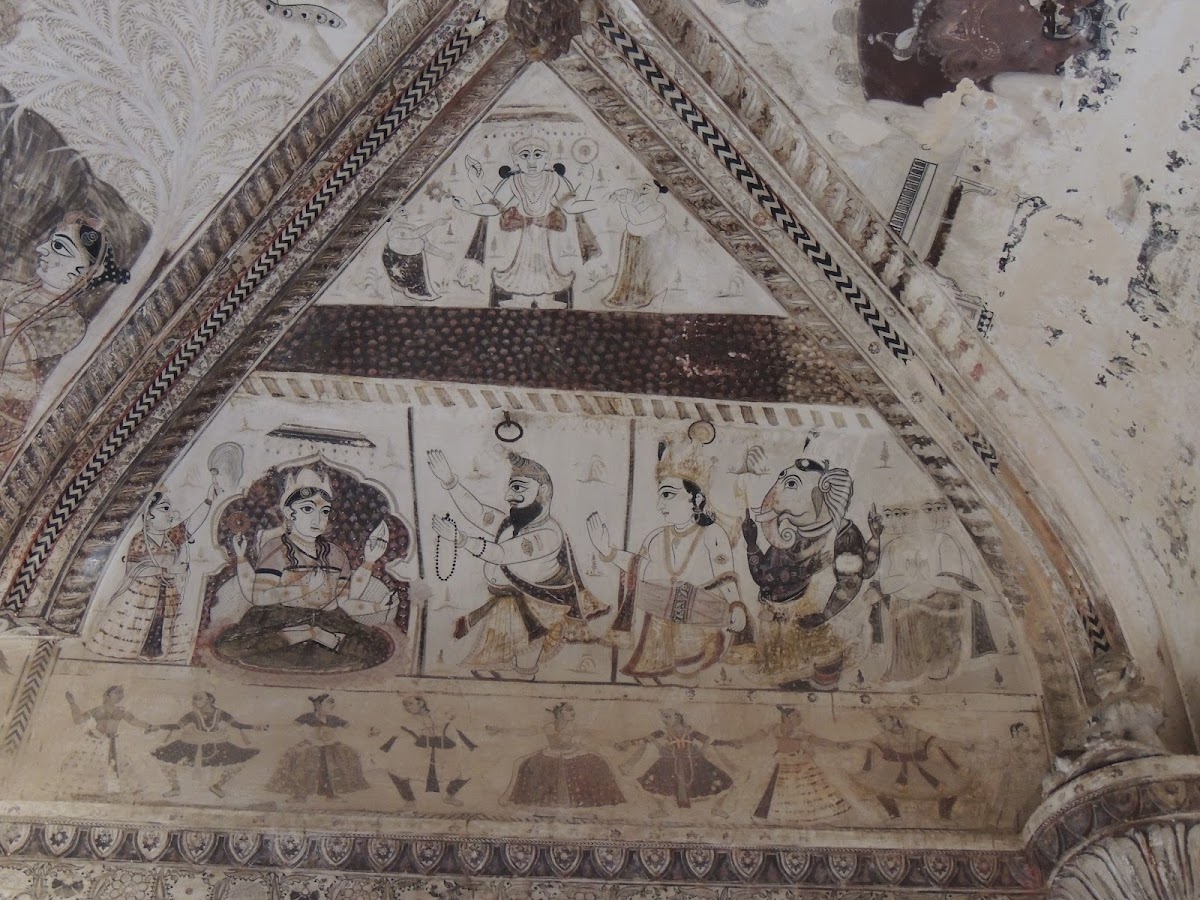 |
| Ganesha and Karthikeya visiting Lakshmi |
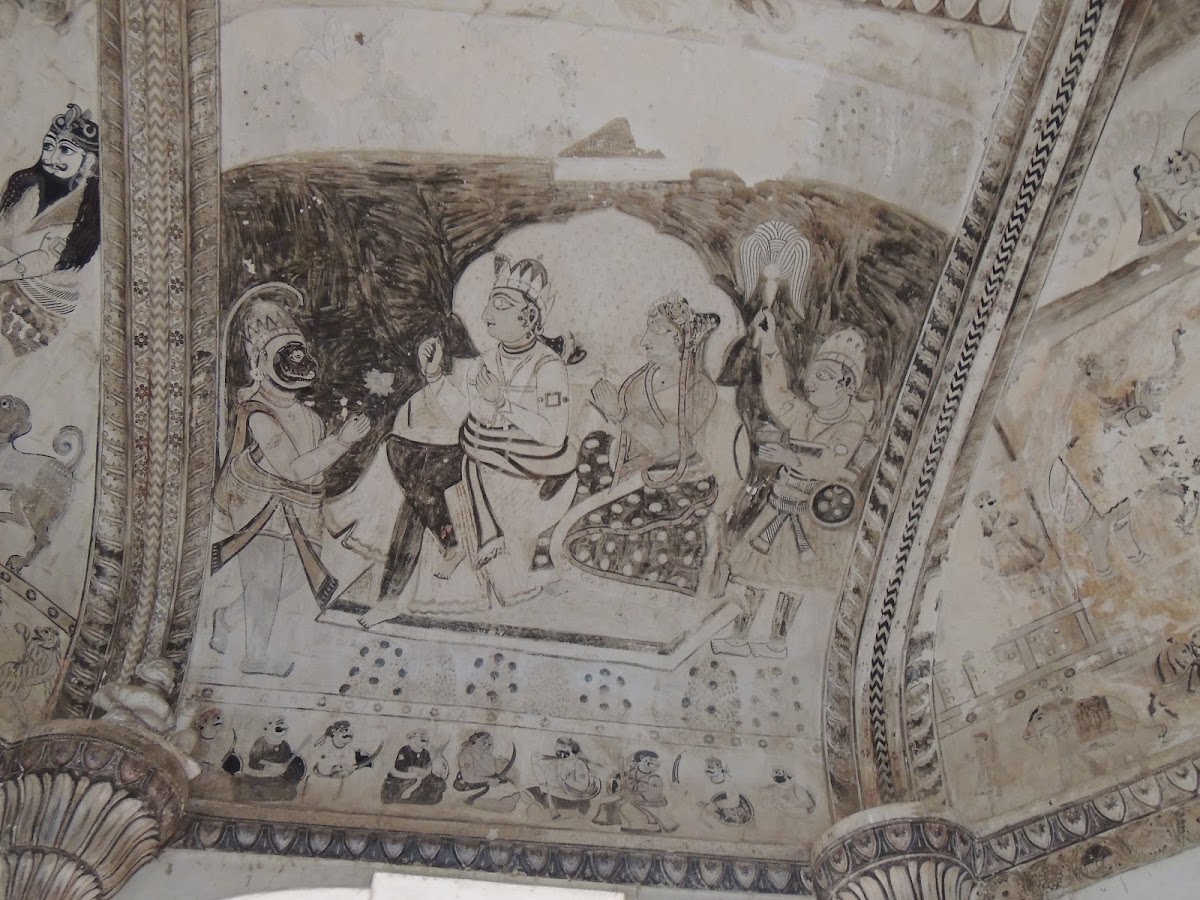 |
| Rama, Sita, Lakshmana and Hanuman - in court |
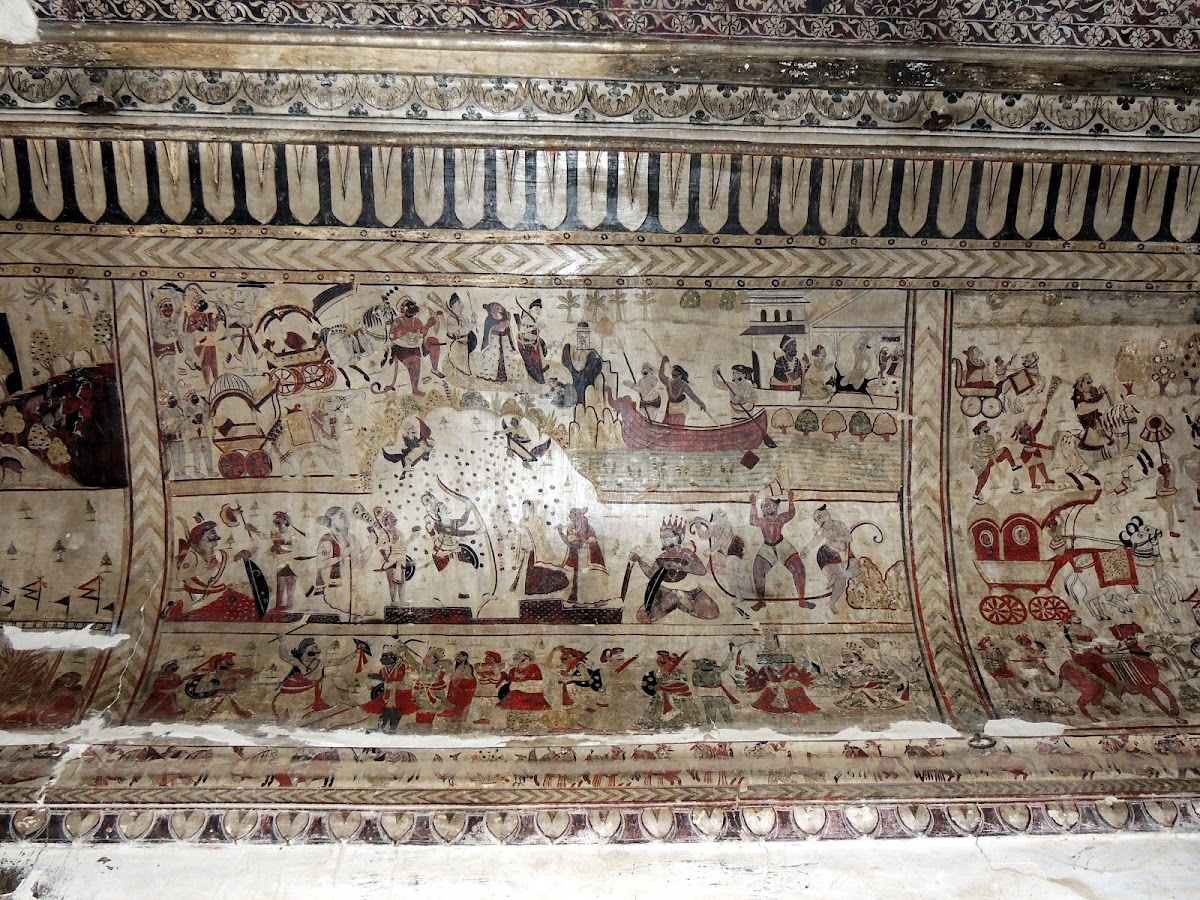 |
| Scenes from the Ramayana: Centre: Rama breaking the bow at Sita's Swayamvar, bottom: Parasurama meeting Rama, Top: Rama, Sita and Lakshmana leaving for the exile |
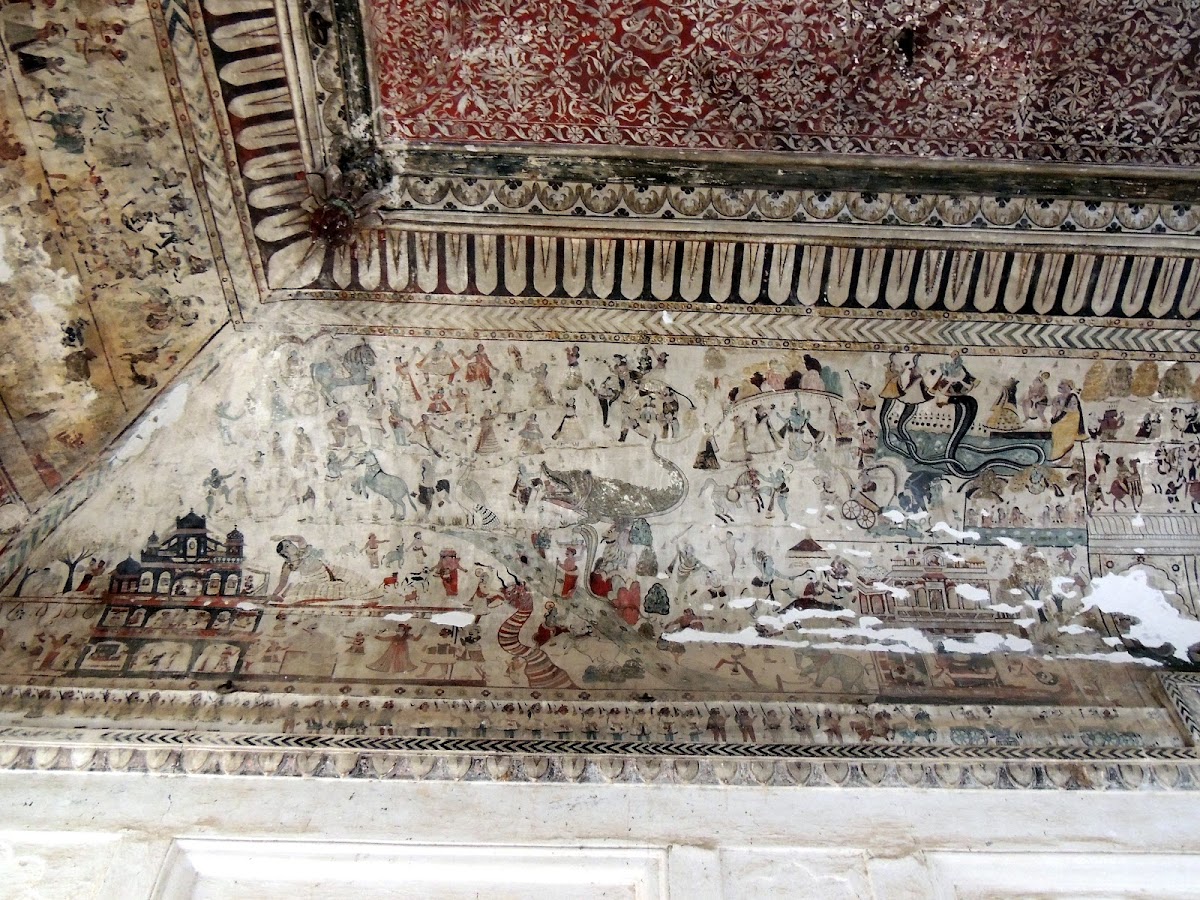 |
| Scenes from Krishna's life: Krishna's triumph over Kaliya, Krishna killing the demons Aghasura (here shown as a crocodile), Trinavarta (the whilwind), Putana (the demoness), and others. Also, krishna with the gopis |
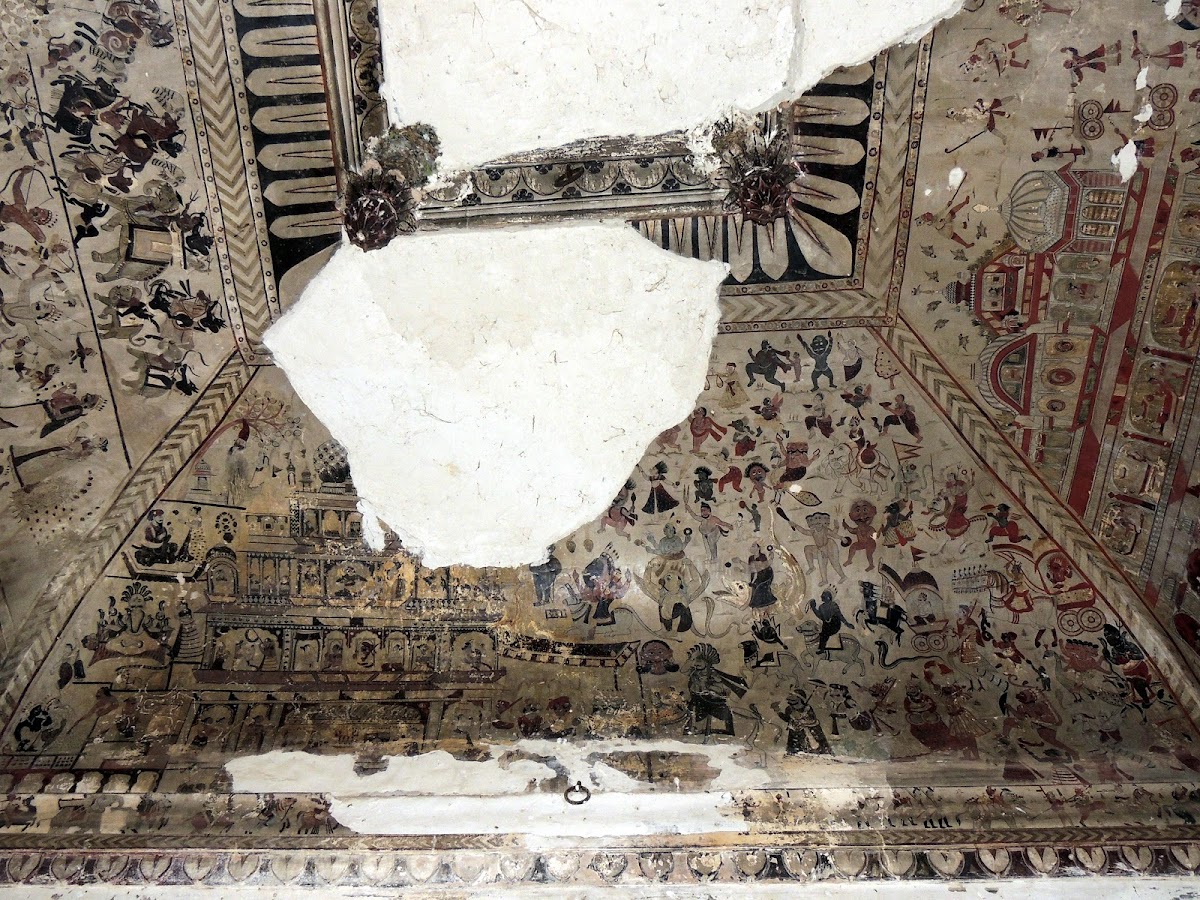 |
| A procession of gods in their vehicles, probably to a wedding. |
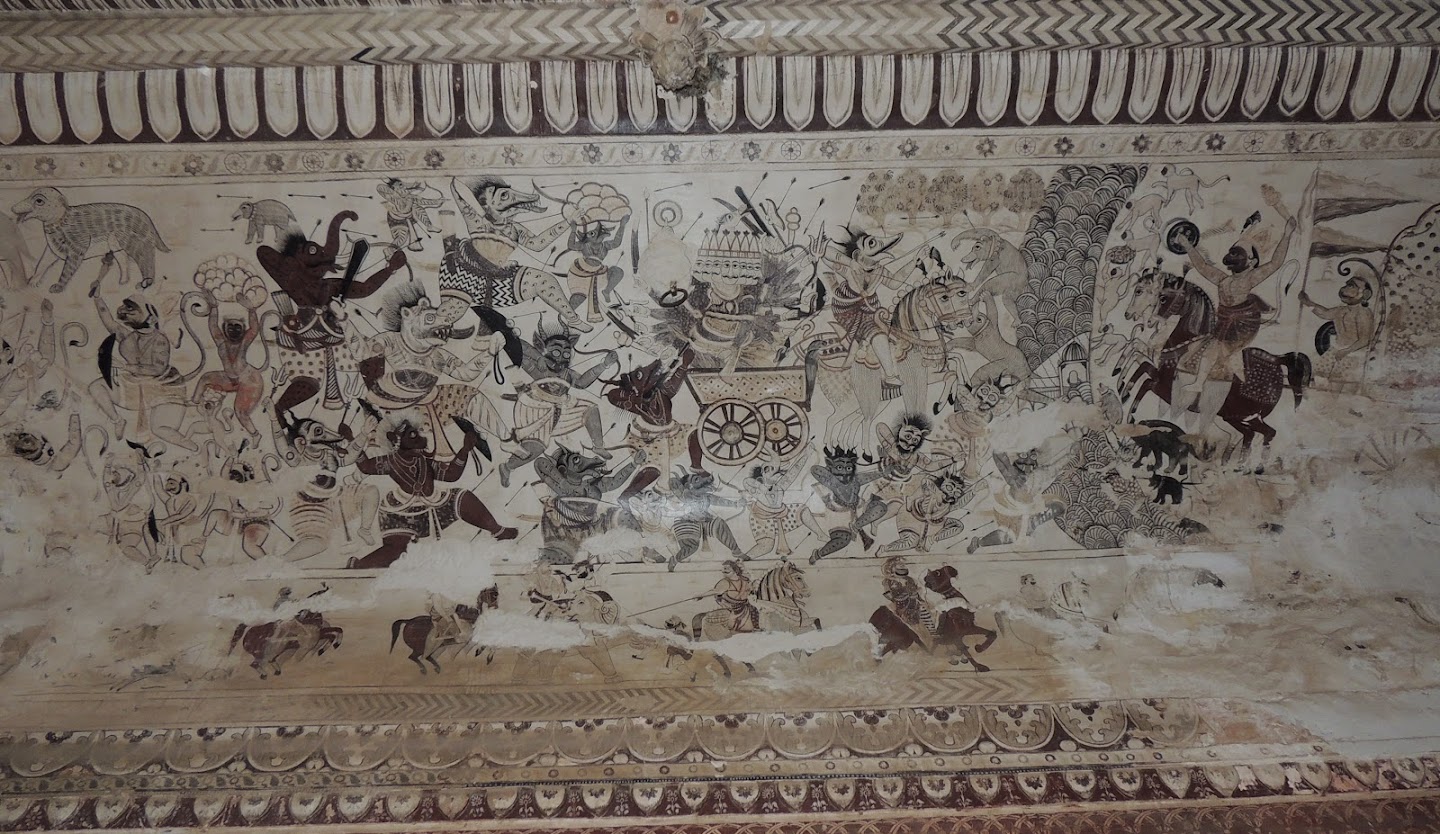 |
| Scenes from the Ramayana: war, with Ravana in the centre (10 headed) |
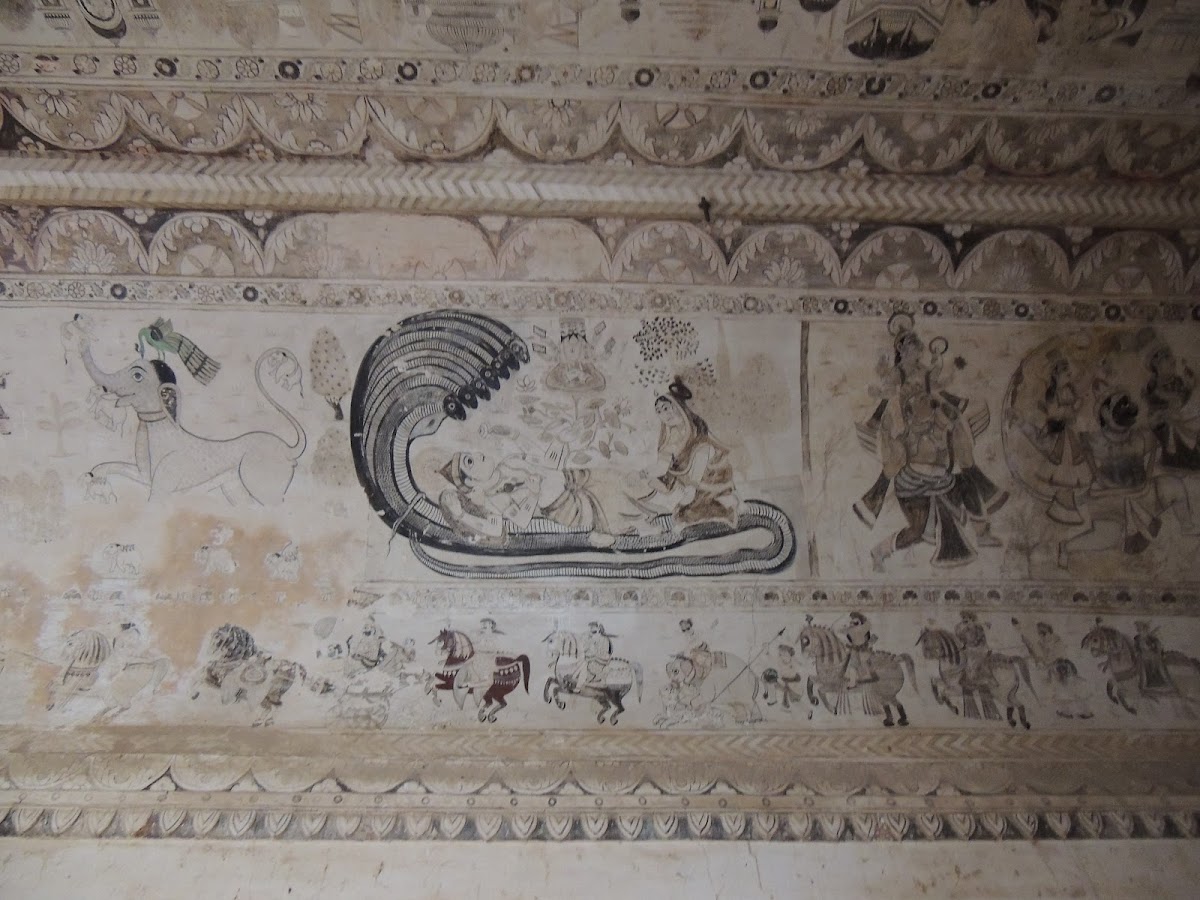 |
| Forms of Vishnu: Sheshasayee (sleeping on Adishesha, with Lakshmi at his feet and Brahma emerging from the lotus at his navel), Vishnu on Garuda, and also Rama and Lakshmana being carried by Hanuman |
The temple, however, very interestingly, shows us another group
of paintings as well – historical narratives. These again, are much later
paintings, probably painted during the British era. These paintings focus on
clashes between the British and local forces, centred on various forts in the
region. While my lack of knowledge prevents me from identifying the forts and
the battles depicted, we can clearly make out the differences between the local
and British forces, as well as their arms and ammunition. These paintings are
an interesting extrapolation of the local painting style, usually used for
religious paintings as we have seen earlier.
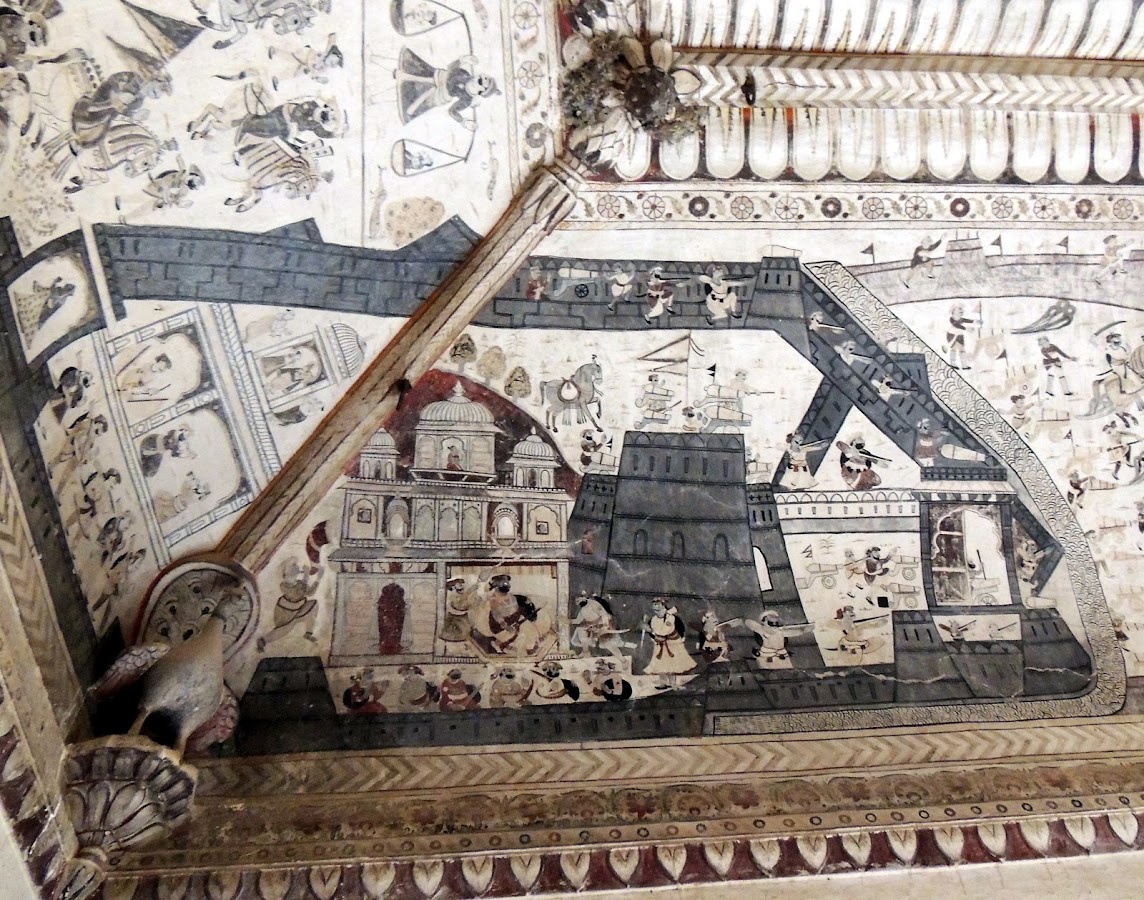 |
| A fort, with rooms and people in them |
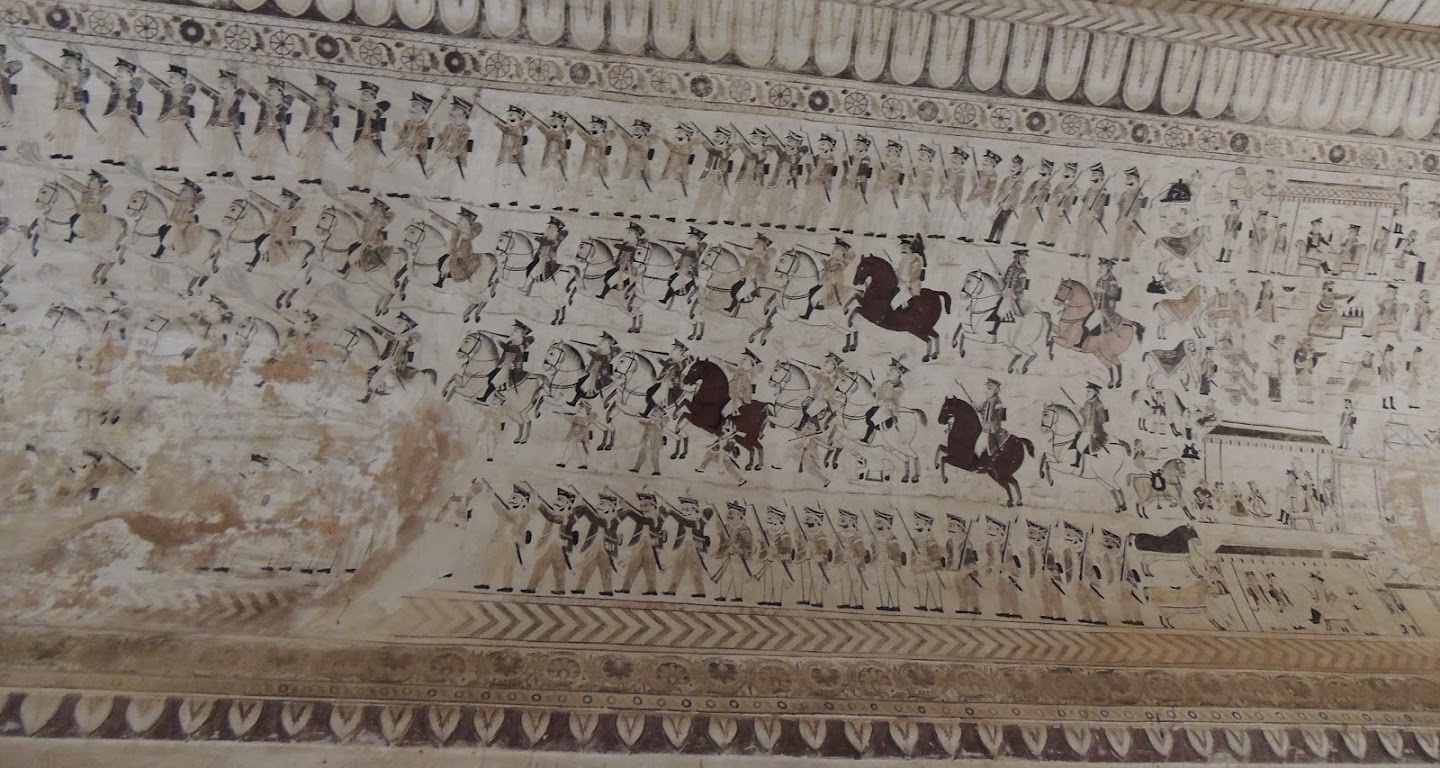 |
| The British Army |
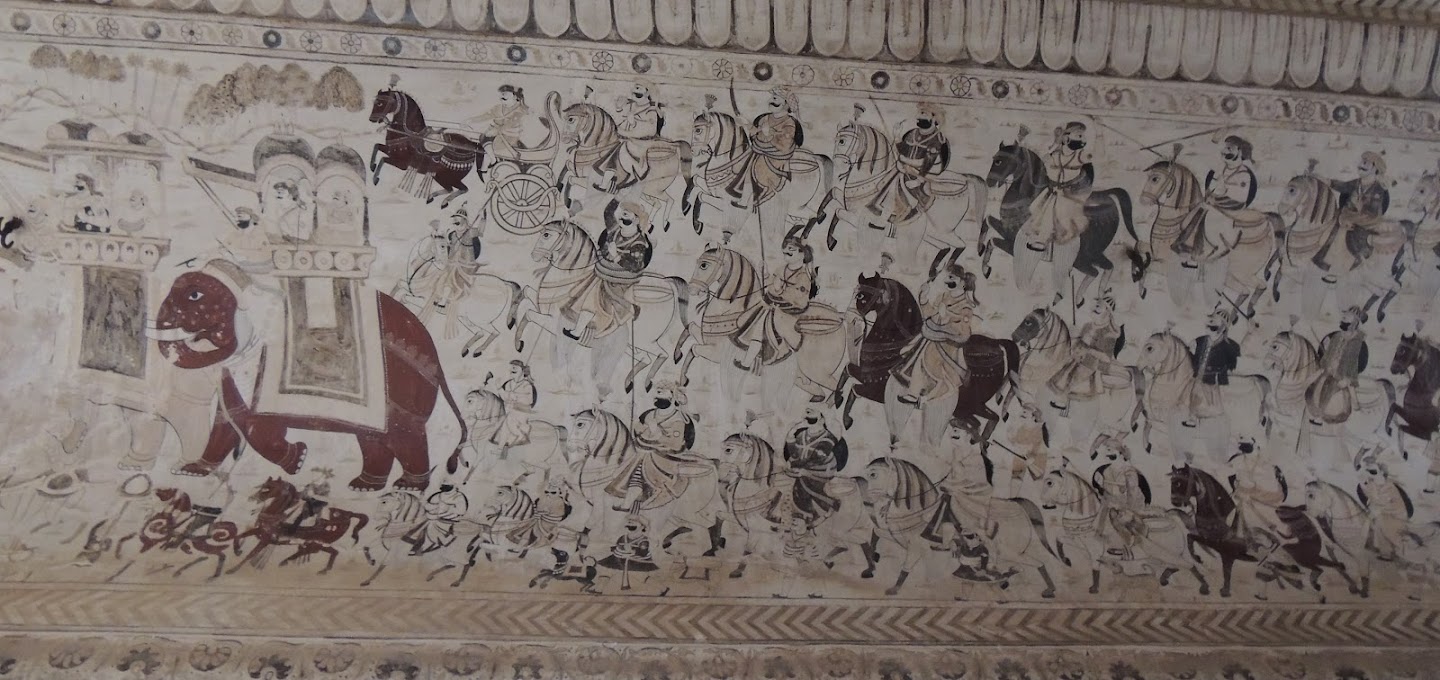 |
| The local armies |
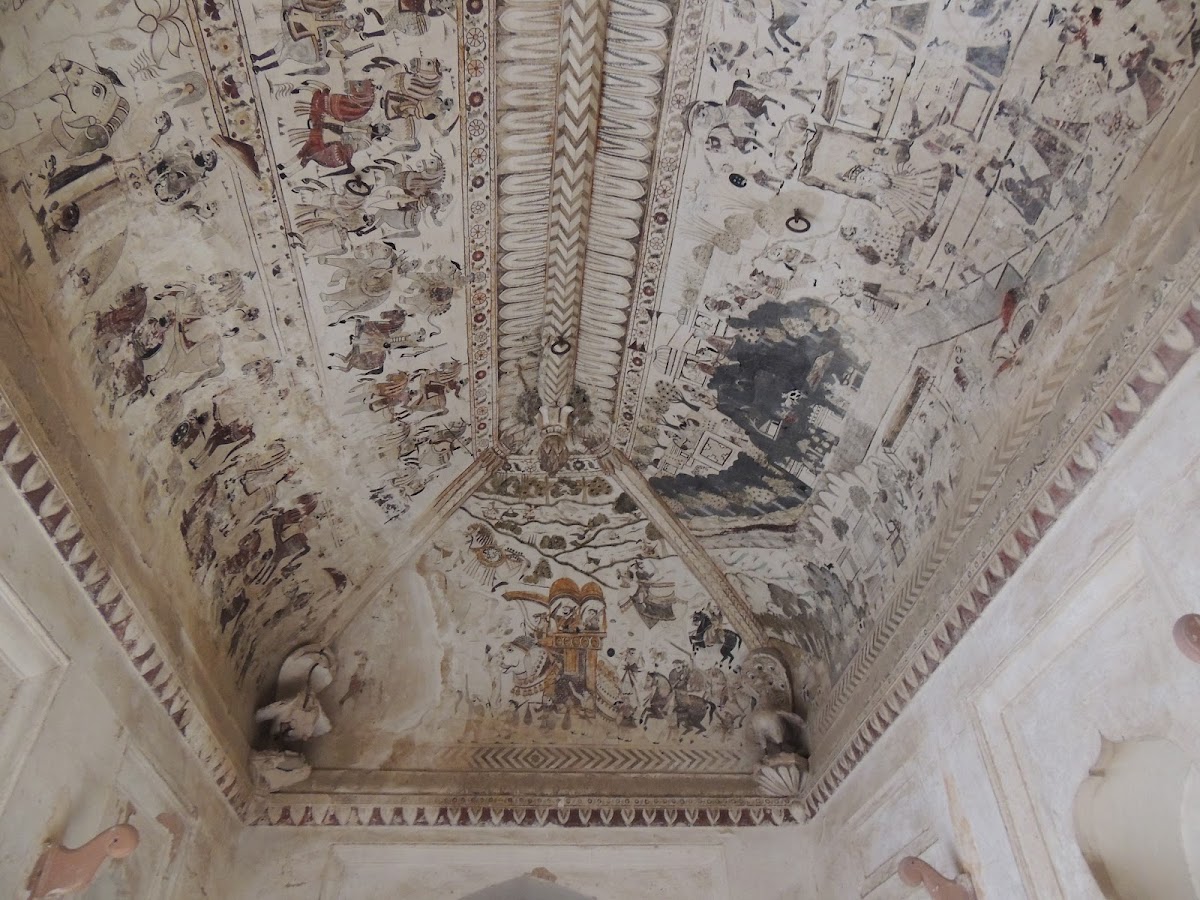 |
| A historical scene, with the King on the elephant in the centre, the fort on the right and armies on the left |
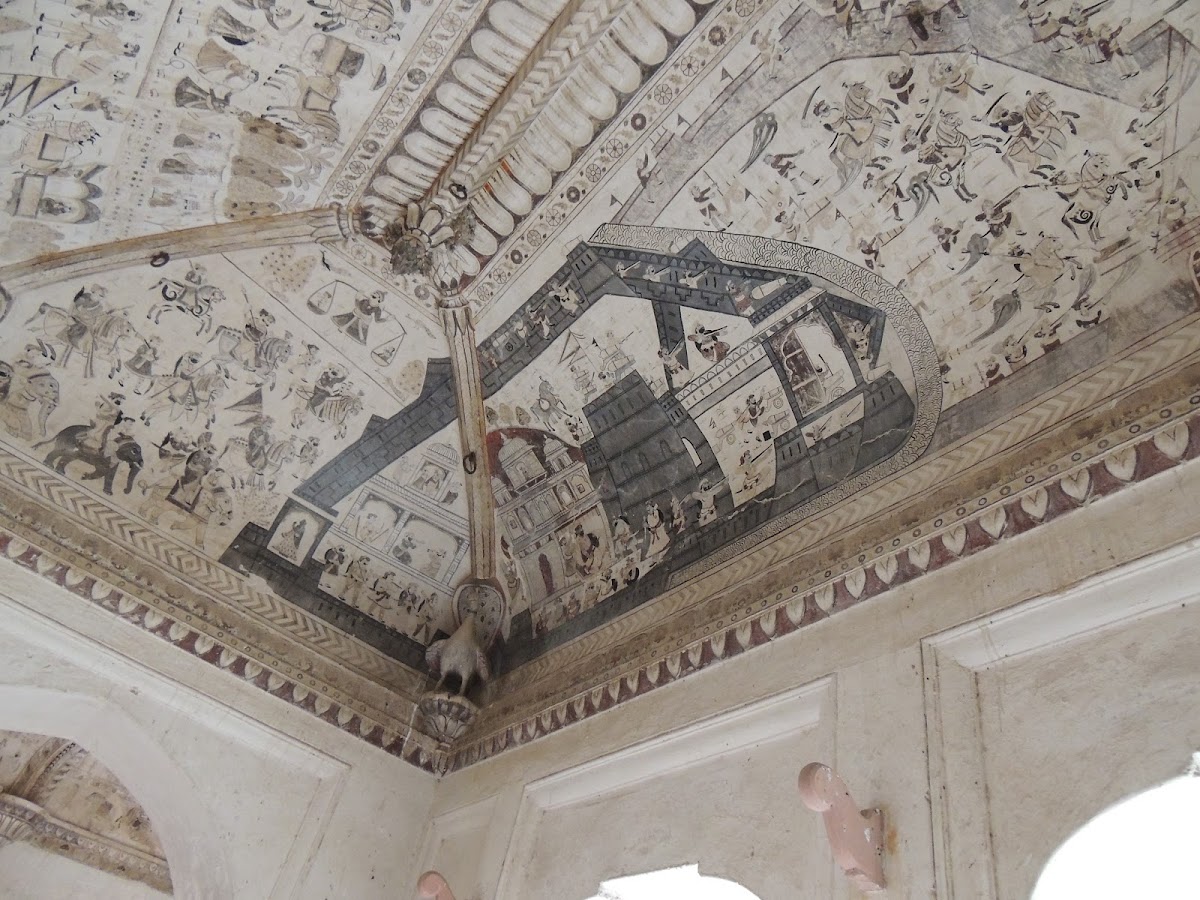 |
| Another fort being defended against the British. note the idea of action being conveyed by the bursts of gunfire appearing like speech bubbles! |
This is just a glimpse of the art of Orchha, seen in less than
a day. The more I look at them, the more I want to visit Orchha again!
Information:
- Location: Orchha is
located in Madhya Pradesh, about 460 Km from Delhi, 125 Km from Gwalior, 350 km
from Bhopal, 180 Km from Khajuraho and 15 Km from Jhansi.
- How to Reach:
- By Train: The nearest
Railway station is Jhansi, which is well connected to most cities in India.
- By Road: Buses are
available from Gwalior, but they aren’t very frequent. It is best to either
take a train to Jhansi, or hire a vehicle.
- Where to Stay: There is
no dearth of hotels, resorts and homestays in Orchha. M.P. Tourism has 2 resorts in orccha – The Betwa
Retreat, which is near the river, and has both, cottages as well as Swiss
Tents. The Sheesh Mahal is in the fort complex, and is the more expensive
option.
- Note: I stayed at the
Betwa Retreat, and would recommend the cottages over the tents.
- Suggestions:
- Most people (including me)
combine a visit to Orchha with Gwalior and Khajuraho. It is best to hire a car
from Gwalior to Orchha and visit Datia and Jhansi along the way. Keep at least
one full day, and preferably two days, to cover Orchha at leisure.
- The sun setting behind the
cenotaphs is a pretty sight, not to be missed. The best spot to see this sight
is from the bridge on the river. However, if you do miss it, the morning view
is just as good.
Wow, it would take days to really take in all the artwork in just the pictures you used in this post! What a shame there is so much damage to some of them. One question I had about the more modern paintings you saw - do you think they were done over older paintings?
ReplyDeleteYes, Natalie.... there is so much artwork here with so many details that you really need time to go over and understand the stories they narrate. and sadly they arent in great shape either... and even the newer ones are at least over a hundred years old... and i dont think they would have painted over... the paintings would have faded, so they would have been repainted.
DeleteLovely images from Orchha. You have covered it beautifully.
ReplyDeleteAmazing blog so much interesting and informative the vibrant art of orchha thanks for wonderful sharing.
ReplyDeletesame day agra tour by car